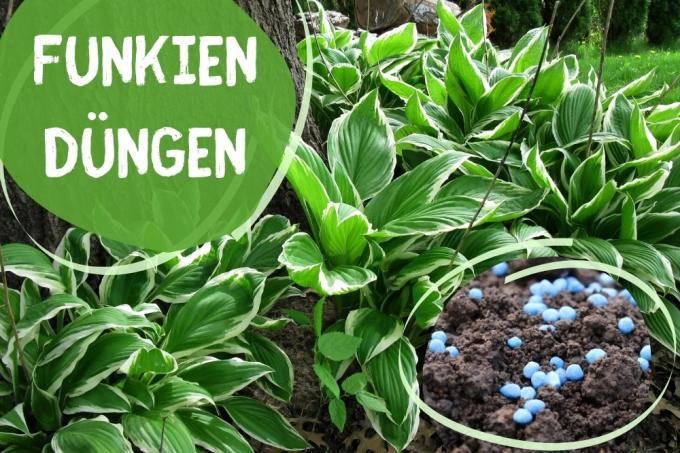
table of contents
- When to fertilize hostas
- Ripe compost
- Horn shavings
- Herbal manure
- Guano fertilizer
- Home remedies coffee grounds
- Use of blue grain
The hostas from Asia are very long-lived, hardy and thrive in shady to partially shaded places. They need appropriate nutrients for healthy growth. You will find information on fertilization below.
When to fertilize hostas
Especially in spring, hostas need additional nutrients in the form of fertilizer, because they now need a lot of energy because they have to sprout again from the roots. In principle, this would already answer the question of the "when", but here are a few brief explanations:
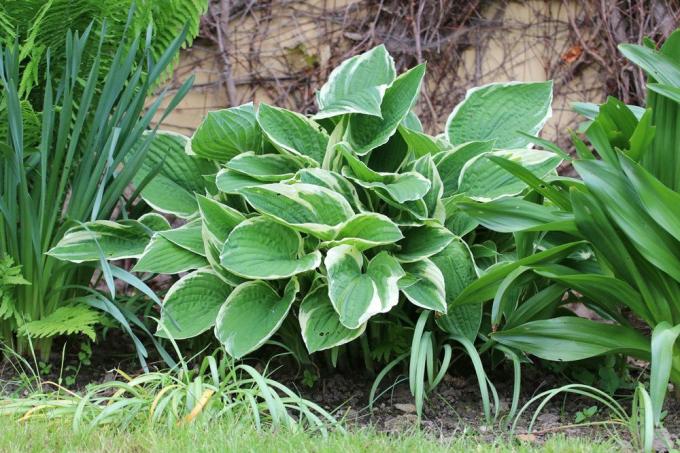
- Basic fertilizer application in early spring
- March ideal
- before new growth begins
- organic fertilizers have proven their worth
- provide needed nutrients and
- sustainably improve soil structure
- Use of long-term fertilizers such as compost or horn meal or shavings
- alternatively, fertilizer application in autumn
- normally one fertilization per year is sufficient
- Also fertilize the tubs before they sprout
- if necessary, second fertilization in autumn
Various fertilizers can now be used to fertilize hostas. Below we have listed some of the most commonly used organic fertilizers.
Note: The stems of the leaves and flowers are not very stable in over-fertilized plants. They bend over easily. However, over-fertilization is not possible when using organic fertilizers.
Ripe compost
Well-seasoned, ripe compost is not only one of the best and most natural sources of additional nutrients for hostas. It contains all the minerals and nutrients the plants need. Compost ensures healthy and abundant growth during the growing season. It should be used as follows:
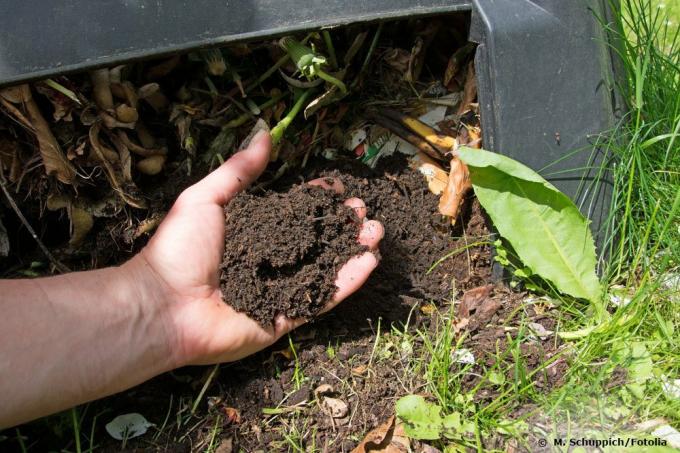
- Addition in early spring
- before new growth
- just lift it under the ground
- in addition, sustainable improvement of the soil structure
- if necessary, second dose in early summer
- two fertilizations per year are sufficient
But be careful when working in the soil. The hostas form many rhizomes, densely branched underground. These must not be damaged or even destroyed. Growth would then stall or, in the worst case, the plant would perish.
Tip: A layer of mulch made from falling leaves or bark should be applied around the heart petal lilies. This not only stores moisture, but also releases necessary nutrients such as nitrogen to the earth and at the same time serves as winter protection. It may then be possible to dispense with additional fertilization with compost or other fertilizers.
Horn shavings
Horn shavings or a finer form of it, the horn meal are made from the hooves of cattle. Most of the time, this fertilizer comes from Argentina. When buying, you should make sure that the cattle were kept organically. This fertilizer can also be used when using compost, but it can also be worked directly under a layer of mulch. The effect is as follows
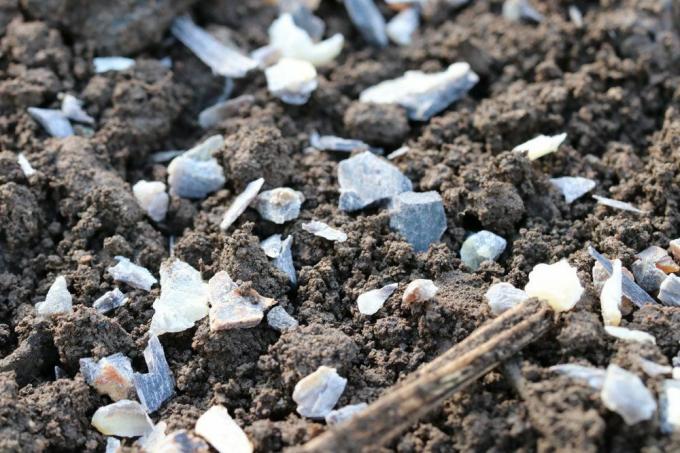
- required nitrogen is released
- also contain: sulfate, phosphate and potassium
- no over-fertilization possible
- has a long-term effect
- does not affect the pH value of the soil
Note: Horn shavings or meal is an organic fertilizer with a long-term effect. The active ingredients contained are only released after a few weeks.
Herbal manure
Homemade herbal manure or brews are also a good solution to supply the hostas with additional nutrients. It is a kind of liquid fertilizer. However, it not only contains nutrients, but can also be used to combat pests such as aphids or fungal diseases. The hosta is strengthened without any further effort and can fight off viruses and bacteria better. Are suitable for production
- Nettle, dandelion, horsetail and ground elder
- Soak parts of the plant or boil them briefly
- Apply diluted with irrigation water
- Give every two to three weeks
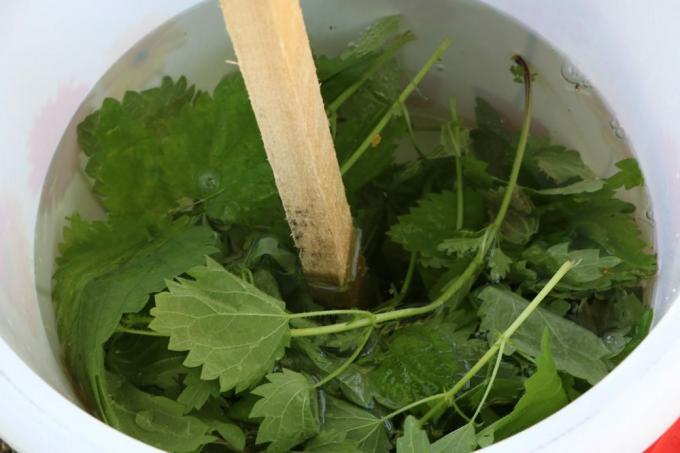
Prepared liquid manure can be kept for a long time. They can be kept in a closed jar and eventually be used until autumn.
Tip: Adding compost or horn shavings in spring is sufficient, but plant manure can also be used from early summer to autumn to fertilize hostas.
Guano fertilizer
We would also like to briefly mention this organic fertilizer. It comes from cliffs in areas where there is hardly any rainfall, such as Chile, Peru or the South Pacific. It is the droppings of sea birds. It is available in the form of liquid fertilizer, sticks and granules. Its use can positively support growth after winter. The ingredients and its effect are worth mentioning:
- Main nutrients contained 15% nitrogen, 30% phosphorus
- Versatile use in beds and buckets
- dissolves quickly
- causes soil improvement
- good immediate and long-term fertilizer
Caution: When buying, it is essential to pay attention to the origin. There are also many guano fertilizers available on the market, which consist of normal chicken manure or droppings from local seabirds. These are already recognizable from the price. They are cheaper.
Home remedies coffee grounds

Not to be forgotten is the old home remedy, coffee grounds. In addition to azaleas and rhododendrons, hostas also love slightly acidic soil, preferably forest soil. Coffee grounds can be used here as a peat substitute. In this way, water can be absorbed better and the earth's surface remains moist longer. Advantages are:
- contains a lot of nitrogen, phosphorus, copper, zinc, some potassium
- Soil is upgraded
- no over-fertilization possible
- causes a slight acidification of the soil
- easy incorporation into soil
Use of blue grain
This is a complete mineral fertilizer. Although it contains many of the nutrients necessary for the host, it is produced chemically. Some hobby gardeners swear by it, but for the sake of the environment one should consider carefully. Worth mentioning for blue grain are
- nutrients contained: potassium, phosphorus, nitrogen
- shows quick effects
- even if there is a prolonged undersupply of nutrients
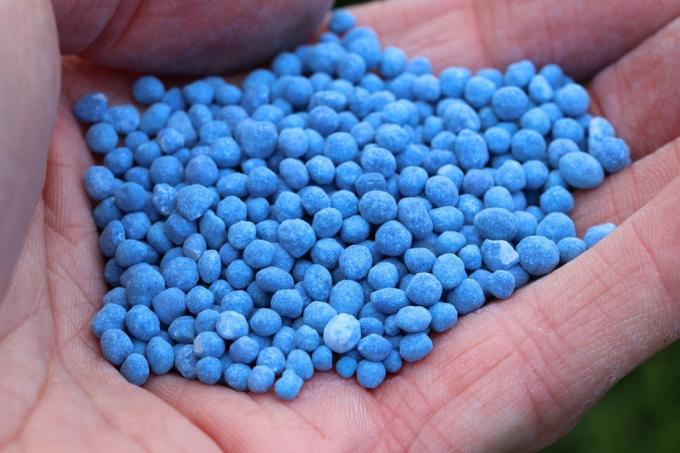
However, when using Blue grain When fertilizing, always bear in mind that overdosing can quickly occur. It is therefore important to always adhere to the manufacturer's dosage recommendations when administering the product. The dose should never be higher. Furthermore, the leaves must not come into contact with this fertilizer. You can get burned easily.
Tip: The short-term use of blue grain would make sense if the hostas need nutrients quickly, for example if there is an insufficient supply or if other fertilizers such as compost or horn shavings are not available are.

